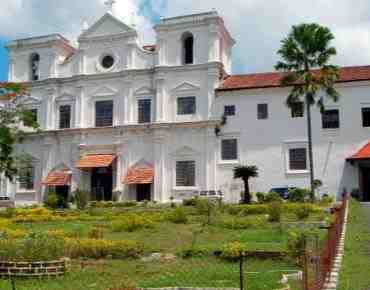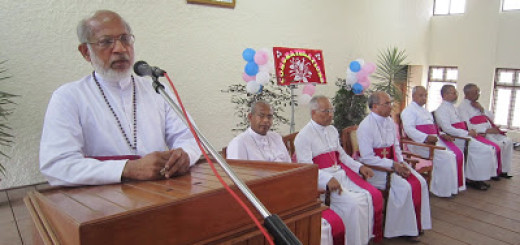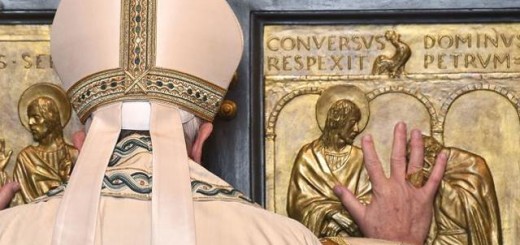The seminary where Swami Vivekanand got a lesson in theology

Published on: 10:21 pm, May 9, 2016 Story By: Mattersindia.com
Panaji: Past the slow-paced busyness of the village streets, at a quiet south-western corner of Rachol, stands the sparkling white seminary, like subconscious of the local people. No sooner have you recovered from the beauty of the majestic structure, next, its 400 years of history takes your breath away.
How does one approach the history of this seminary? As the body which once operated only the third printing press to be set up in Asia? As the theological lab of Swami Vivekanand in 1892 before he was to speak at the World Parliament of Religions the following year? Or the grooming ground of some of the earliest known Konkani grammar and lexicography researchers Sebastiao Dalgado and Thomas Stephens?
Well, the story of the Rachol seminary, doesn’t begin in Rachol, but starts in Margao, as Fr Victor Ferrao, a dean at the seminary will tell you.
At the location of the Holy Spirit Church in Margao stood the Holy Spirit College established by the Jesuits in the late 16th century to educate the young men in its neighbourhood. The Jesuits too wanted to pick up Konkani through the college to be able to interact effectively with Goans for missionary work.
Attacks by the Adil Shah of Bijapur led the college to be burnt down and the Jesuits who were in search of some quiet for their academic work rightly landed in the lap of serene village life in Rachol.
“The college was first housed in what is the present day Rachol church (located around 500 ms from the seminary structure today). It kept moving between Margao and Rachol, depending on the attacks from the Bijapuris. There was eventually a debate between the Jesuits on where the college should be located and the college in Rachol was established in November 1, 1610, therefore giving the institute its then name as All Saints Day,” said Fr Ferrao.
At first, the Jesuit priests would reside in a neighbouring house with local boys, who were educated in the languages, rhetoric, grammar, mathematics and music. In the early 17th century, the current structure of the seminary (the then college) began to take shape.
The rigorous academics at the college produced scholars like Fr Thomas Stephens (who brought the lyrical qualities of Hindu puranas in the Konkani narration of Jesus Christ’s life) and Sebastiao Dalgado (who introduced lexicography to Konkani).
A printing press set up in the college, printed the second known published book in India in Konkani, the first being in Tamil. The press churned out around 16 such Konkani publications over the years.
The Jesuits enjoyed the idyllic and academic life by the banks of River Zuari in Rachol upto 1759. This was until the Portuguese administrator Marquis de Pombal decided that the Jesuits should be expelled from the Portuguese territories and the riches, which he thought they had accumulated, be seized, including the lands in their possession.
“They were bundled up like prisoners and taken to Old Goa, from where they were shipped to Portugal. Many Konkani books at the college were confiscated, some got destroyed in the chaos,” said Fr Ferrao.
The Oratorians and later the Vincentians were handed the college, but could not in any way measure up to the academically oriented Jesuits. When plans to revive the college to its Jesuit glory could not fructify, the idea emerged of converting the college, to train priests for local requirement, into a seminary, which has remained one for over 170 years now.
“The first seminary in Goa was set up atop a hill in Chorao, both the Rachol and the Chorao seminaries ran parallel for a while,” said Fr Ferrao.
All through the change of hands, Rachol college and later the seminary was known by several names from Holy Spirit College, Our Lady of Snows, All Saints College and College of St Ignatius.
Swami Vivekanand’s portrait is mounted prominently in the seminary library as a reminder of his visit to three-day visit to the seminary in 1892, where he debated theological ideas with the students and professors of the seminary, in preparation of his speech at the World Parliament of Religions.
Today, the seminary offers human, spiritual, intellectual and pastoral formation for around nine to 11 years in preparing young men for priesthood.
From its stone flooring to the pipe organ, the unimaginably tall ceiling, its wall paintings imitating Angelo Fonseca’s Indianised Biblical figures, and windows with staircases to climb on its edge, one can encounter history and architectural marvels in every crevice of the seminary.
“We also have a choir which is more than a 100 years old. And we continue to promote Konkani and in the Romi script as it originated from this house because of the printing press,” said Fr Ferrao.
(Source: The Times of India)
















